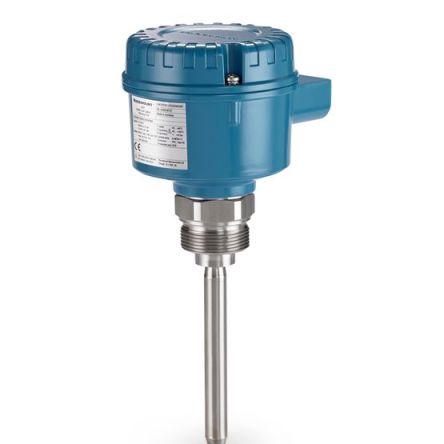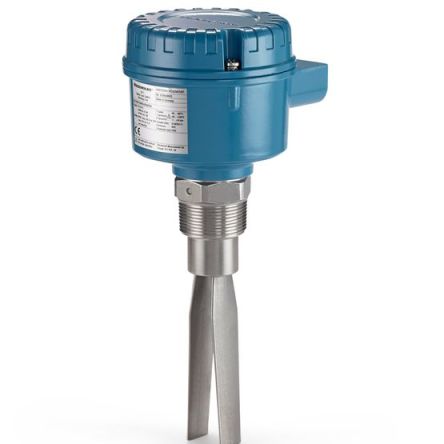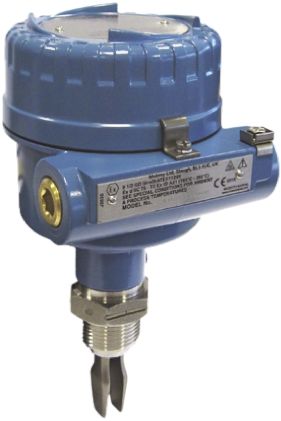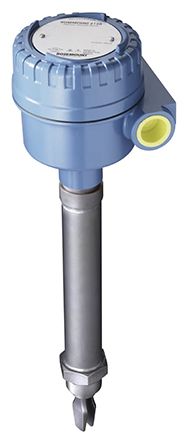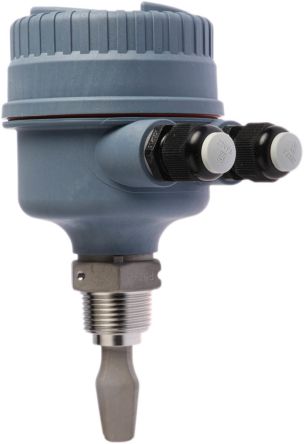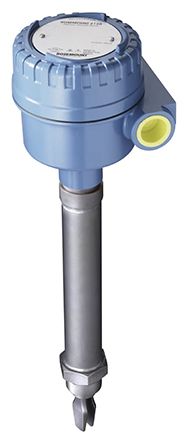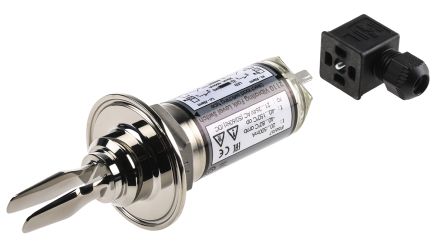- Automation & Control Gear
- Cables & Wires
- Enclosures & Server Racks
- Fuses & Circuit Breakers
- HVAC, Fans & Thermal Management
- Lighting
- Relays & Signal Conditioning
- Switches
- Batteries & Chargers
- Connectors
- Displays & Optoelectronics
- ESD Control, Cleanroom & PCB Prototyping
- Passive Components
- Power Supplies & Transformers
- Raspberry Pi, Arduino, ROCK, STEM Education & Development Tools
- Semiconductors
Rosemount Level Sensors
Level sensors, also known as fluid level gauges or level transmitters, are critical components in monitoring and managing the amount of liquids, powders, or granular materials within a tank, container, or silo. These devices play an essential role in various industries by ensuring precise measurement of material levels, which is crucial for optimal process control and resource management.
Level sensors function by detecting the level of the substance they are monitoring and providing an electrical signal as feedback. This signal can either be proportional to the level or set to trigger at specific predetermined levels. The feedback from the sensor is used to automatically control valves, initiating them to open or close, which helps in maintaining the desired level within the container.
Level Sensor Types
The choice of sensors is usually determined by the measured substance, operating environment, mounting position, and specific application needs. The choice influences the measurement technique used, such as capacitive, guided wave radar or hydrostatic level measurement. The most common types of level sensors are:
Capacitive Level Switches
Capacitive level switches provide a basic full/empty level indication determined by the mounting position of the sensor. This type of switch is non-contact and uses a sensing field to determine liquid levels. Capacitive sensors provide accurate switching even with heavy residue build-up.
Vibrating Level Probes
Vibrating level probes use a rod or a fork that constantly produce high-frequency vibrations. When the vibrating probe comes into contact with the medium, the vibration changes and the vibrating level switch outputs a switching command. Vibrating level switches are used as overfill protection devices or low-level indicators in liquids as well as in granular and powder bulk solids.
Conductive Level Switches
Conductive level switches are sensors that use stainless steel probes with an electrical contact output to measure a specific liquid level. Used in conjunction with a level control relay to set and monitor each probe. Applications include ponds, reservoirs, sumps, pharmaceuticals, closed vessels and open tanks.
Ultrasonic Level Sensors
Ultrasonic level sensors generate ultrasonic sound pulses that are reflected by the surface of a liquid medium. The time travelled by the ultrasonic pulse is calculated by the sensor which then determines the distance of the liquid to give an accurate fill level. The ultrasonic sensor's response is influenced by turbulence, pressure, moisture, and temperature.
Applications of Level Sensors
Common applications of water and oil level sensors include:
- Manufacturing: In industries such as chemical manufacturing and food processing, level sensors are indispensable for ensuring proper liquid levels in tanks and vats. They help maintain the balance of ingredients and ensure safe storage conditions, directly impacting product quality and consistency.
- Automotive Industry: Level sensors monitor critical fluid levels within vehicles, such as fuel, brake fluid, coolant, and washer fluid. For example, brake fluid level sensors ensure system integrity by detecting leaks or low fluid levels, which could lead to brake failure. Engine oil tank level sensors are vital for preventing engine damage due to low oil levels, and coolant level sensors alert drivers to potential engine overheating.
- Water Treatment: These sensors are integral to managing water and wastewater levels, helping facilities maintain the correct treatment volumes and monitor the effectiveness of the treatment processes.
- Pharmaceutical Processes: In pharmaceutical production, precise control over liquid levels in mixing tanks and other equipment is essential for compliance with strict industry standards and ensuring batch quality.
- Power Generating Plants: Level sensors in power plants monitor the levels of various fluids such as cooling water and lubricants, ensuring the smooth operation of turbines and other critical equipment.
How to Order Level Sensors From RS?
RS is a trusted supplier and distributor of high-quality level sensors, offering a comprehensive selection from renowned brands such as RS PRO, Gems Sensors, Sick, and Siemens. Our level sensors are engineered for precise and dependable performance, meeting rigorous standards for integration and efficiency across various applications.
Business account customers who order level sensors online from RS enjoy free delivery on all purchases over $40 (excluding GST). For orders below this amount, a delivery fee of $10 is applied. Delivery is free for orders over $80 (excluding GST) for private accounts and guest shoppers, with a $12.95 fee applicable to smaller orders.
Delivery Information for Australia
To ensure the prompt arrival of your level sensors, please place your orders by 5 pm AEST from Monday to Friday. We provide next working day delivery for items that are stocked locally, although delivery times may be extended in some regional areas. For a detailed overview of all our delivery options, including special services like same-day delivery and consolidated shipments, please visit our delivery information page.
